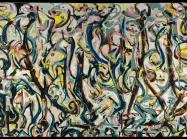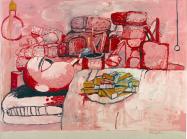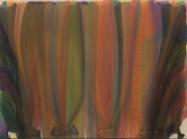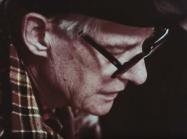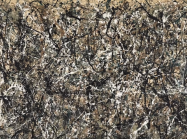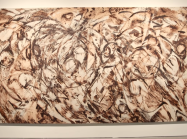Ed Clark was hardly a household name, but his work fit squarely in the era’s prevailing genre–Abstract Expressionism. The thing is, Clark was black.
abstract expressionism
Away from the Easel: Jackson Pollock’s Mural is a focused exhibition dedicated to the first monumental painting by American artist Jackson Pollock (1912–1956).
Although he made his name in the 1950s and ‘60s as an Abstract Expressionist, Philip Guston is now best remembered for the dark humor conveyed in the cartoon-like figurative paintings and drawings…
Influenced by the movements of color field and action painting, Francine Tint’s paintings are the result of a process of disclosure, drawn from her own life events, dreams, and literature.
By the 1960s many American and international artists were pushing abstraction in new directions, exploring a range of formal possibilities and liberating uses of color in their work.
In 1983 Courtney Sale Ross made a compelling documentary about her artist neighbour, Willem de Kooning: 'Strokes of Genius: de Kooning on de Kooning'.
This video essay seeks to explain how art progressed from figurative works to the abstract art of Jackson Pollock.
From her childhood in early 1900s Brooklyn to the end of her life in East Hampton, Lee Krasner painted with a distinctive, courageous vision. It was this vision that pushed her to persevere as an…





